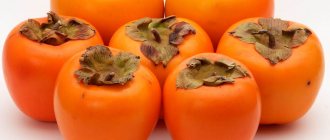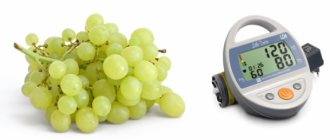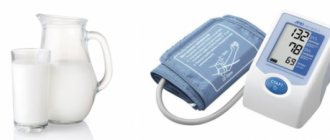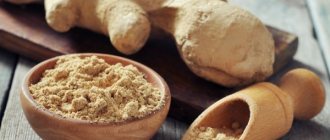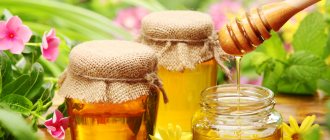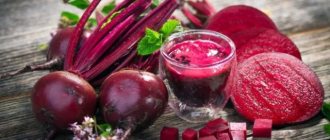Sauerkraut is a traditional winter product on every family’s table. Adults and children love this crunchy snack. Many people prepare the vegetable in the fall and enjoy its piquant taste until spring. But often table salt is used for cooking. Therefore, for many people, the question of how useful sauerkraut is for hypertension is relevant.
Benefits and harms
Sauerkraut is a tasty and very valuable dish, rich in vitamins. Very often this product is recommended to be consumed with a healthy diet.
This dish has the following beneficial properties:
- Regular consumption of sauerkraut eliminates the appearance of vitamin deficiency;
- This product helps to enhance metabolic processes, which will help get rid of extra pounds;
- It has a beneficial effect on the heart and blood vessels, but if you have high blood pressure, you must comply with the conditions for its use (they will be described separately).
This dish is contraindicated for acute gastrointestinal diseases, pancreatitis and cholecystitis. Apart from antihypertensive drugs whose systolic pressure is less than 80 millimeters of mercury, it is also best to avoid this product.
Fresh cabbage for hypertension
In addition to the above beneficial properties, fresh cabbage also has a diuretic effect. Due to this, it removes water from the body, which leads to a decrease in the volume of circulating blood, and as a result, the pressure drops. Of course, the effect is insignificant, but it still plays a role in the treatment of hypertension.
Therefore, fresh vegetables can be consumed for hypertension without any restrictions. There are recommendations to drink cabbage juice, but it does not contain fiber, so it is better to eat cabbage in its original form, with minimal cooking.
Who should not eat sauerkraut?
Despite the enormous advantages of this dish, there are limitations to its use. There are diseases in which it can harm a person:
- increased stomach acidity;
- pancreatic diseases;
- reflux esophagitis;
- exacerbation of gastritis;
- kidney disease, renal failure;
- peptic ulcers;
- gallstones, recovery period after gallbladder removal;
- high blood pressure;
- during breastfeeding (possibility of colic in the newborn);
- problems with flatulence, heartburn.
What is the vegetable rich in?
The leafy vegetable is very healthy. When fermented, its valuable properties are only enhanced. During the fermentation process, lactic acid bacteria are produced.
They are necessary for normal intestinal function. Beneficial microorganisms participate in the synthesis of B vitamins. A sufficient content of these biologically active substances ensures the normal functioning of the nervous system. And this is one of the factors in the prevention of arterial hypertension.
Pickled leafy vegetables are also rich in other components valuable for maintaining health. The crispy vegetable contains a large amount of vitamin C. It strengthens the body's defenses and prevents rapid cell aging. An adult only needs to eat 200 grams of cabbage to get half the daily requirement of the vitamin. It is important to know that cabbage contains not only ascorbic acid, which is destroyed under the influence of high temperature during heat treatment. The vitamin is also present in a bound form (ascorbinogen). This substance is not afraid of long-term storage and turns into ascorbic acid after short-term heat exposure.
See also: What to do if a nursing mother has high blood pressure?
Vitamin U is present in the crispy leaves. It protects the mucous membrane of the stomach and intestines from the appearance of ulcers and erosions. Cabbage also contains choline, ionositol, and other biologically active substances:
- vitamins - A, B1, B2, B6, biotin, P, PP;
- macroelements - phosphorus, calcium, magnesium;
- trace elements - iodine, iron, zinc, fluorine, molybdenum.
The intake of these substances from food normalizes the functioning of all systems and organs. People who consume cabbage lose weight, strengthen and cleanse the walls of blood vessels from atherosclerotic deposits. Such changes have a positive effect on blood pressure.
Methods for preparing cabbage to normalize blood pressure
There are cooking methods that will make this dish even healthier and safer for BP.
Classic recipe
- One kilogram of white cabbage.
- One kilogram of carrots.
- Salt - 30 grams.
- The vegetables are chopped and placed in a deep bowl, salt is added, and then mixed thoroughly. In this case, the chopped vegetables need to be lightly squeezed so that the mass begins to release juices.
- Then you need to carefully squeeze out the ingredients and cover them with gauze.
This method of preparing cabbage requires reading it for about a week. After this time, rinse the mixture with water, squeeze lightly and put it in the refrigerator.
Recipe with cranberries
This recipe is especially relevant for people suffering from hypertension, because cranberries are extremely beneficial for the blood supply.
- Several heads of cabbage.
- One and a half kilograms of carrots.
- Cranberries - 300 grams.
- Fennel seeds - 100 grams.
Chop the vegetables, mix, squeezing lightly with your hands, this will help release the juice. Then add dill and cranberries. The vegetable mixture is placed in a saucepan, flat plate or lid and a weight is placed on top. In this case, you need to gain heavier weight for the day, and then reduce it a little. As a result, the cabbage should ferment for about 2 days. Then pour into jars, close tightly and put in the refrigerator.
Paul Bragg's recipe
This method of preparation makes the dish useful for high blood pressure, pregnancy, and is even recommended for children.
Ingredients:
- Two bales of white cabbage with a total weight of about 6 kg.
- Half a kilo of carrots.
- Three to four cloves of garlic.
- Spices (dill, cumin, celery) 1.5-2 tbsp.
- Dried kelp 1-2 tbsp.
Chop the cabbage into julienne and grate the carrots. Cut the garlic cloves into strips. After the cabbage is mixed with the carrots, stirring a little with your hands, transfer to the bottom of the jar in a 6-7 inch layer. Each layer of vegetables is interspersed with spices, garlic and seaweed. After laying a new layer of vegetables and sprinkle with spices.
Fill the jar in this way until the top is about 7-10 centimeters deep. The last layer is spices. A fresh cabbage leaf is placed on top, and the empty space is filled with cold water.
Cover the container with gauze and load it. Cabbage should be stored at room temperature for about 3-4 days. Pierce the vegetable layers with a knife or other long cutlery several times a day. In addition, any foam that appears must be removed. After this, the brine needs to be drained and the workpiece transferred to the refrigerator.
conclusions
Sauerkraut is relatively contraindicated for hypertension. Due to the high concentration of sodium chloride, it leads to water retention in the body, and, as a result, an increase in blood pressure. However, it can be consumed in limited quantities, since the product has a positive effect on fat metabolism, the disturbance of which is one of the risk factors for high blood pressure.
At the same time, the fresh vegetable is used to combat obesity, and also, due to its diuretic effect, has a slight hypotensive effect and is therefore allowed for hypertension.
Sauerkraut
This method of preparing pickled cauliflower is very beneficial for the cardiovascular system.
- One and a half kilograms of cauliflower.
- One beet.
- Two carrots.
- One to three cloves of garlic.
- Cinnamon - 1 tsp.
- Sugar - 50 grams.
- Salt - 20 grams.
Grind the cauliflower into inflorescences, cut the remaining vegetables in any way. Mix the ingredients and place in a glass jar, add a clove of garlic and cinnamon.
Then you need to prepare the brine. To do this, water is heated in a saucepan. Add salt and sugar to it. The mixture is simmered over low heat until all ingredients are dissolved. When the brine has cooled a little, he pours it over the vegetables. Then cover the jar with cheesecloth and let it ferment at room temperature for about three days. Then close the jar and transfer to the refrigerator.
Chemical composition and calorie content
Preparing sauerkraut involves salting it with a further fermentation process, which results in the formation of lactic and acetic acids and softening of the fiber.
Did you know? The dish was invented in China, originally cabbage was fermented in sour rice wine. This salad was part of the diet of the Chinese who participated in the construction of the Great Wall of China.
In addition to useful acids, the product contains large quantities of the basic and most necessary vitamins for the body: A, B, C (cabbage contains more vitamin C than the same amount of lemon). In addition, during the fermentation process, the salad is enriched with macro- and microelements such as potassium, magnesium, phosphorus, sodium, chlorine, aluminum, boron, iron, iodine.
Sauerkraut is a low-calorie product; 100 grams of the product contains only 26 kcal, which is less than 2% of the average daily human requirement
General recommendations
The most important nutrients for those being treated for cancer and receiving chemotherapy:
Water . During chemotherapy there should be a lot of it. You don't have to drink only water. Drink any drinks you like: juice, milk, tea, etc.
Protein . This is especially necessary for those who have already undergone surgery to remove a tumor. It will ensure normal wound healing. We need protein as a plastic material. These are the “bricks” from which the body is built. Proteins are found in meat, milk, fish, eggs. There is a lot of plant protein in legumes, seeds and nuts.
Vitamins and minerals . Their intake is ensured by sufficient and varied nutrition. You can take dietary supplements or multivitamins from the pharmacy.
Usually, during chemotherapy, food is consumed often, but little by little. It must be high in calories to avoid weight loss.
During treatment, regular (every week) assessment of the following indicators is necessary:
- body mass;
- level of albumin and total protein in the blood;
- hemoglobin level;
- number of lymphocytes.
Nutritional features depend on what side effects of chemotherapy develop as a result of the administration of drugs. Below we provide recommendations for adjusting the diet, depending on the prevailing symptoms.
Our expert in this field:
Moiseev Alexey Andreevich
Oncologist, Ph.D.
Candidate of Medical Sciences
Experience: More than 19 years
Call the doctor
Call the doctor
First aid for poisoning
For severe poisoning, or poisoning that occurs after eating mushrooms or canned food, you need to call an ambulance.
Symptoms that require medical attention:
- very high temperature;
- frequent diarrhea, watery stools, blood;
- signs of botulism and poisoning from poisonous mushrooms - impaired vision and coordination, difficulty swallowing, hallucinations, delirium and muscle weakness;
- a small child, a pregnant woman or an elderly person was injured.
What to do in case of poisoning:
- Gastric lavage. Give the patient water or a solution of soda, salt, potassium permanganate, and then induce vomiting. You should drink no more than half a liter of liquid at a time. Washing should be continued until there are no impurities in the vomit. Typically this requires approximately five liters of liquid;
- Taking enterosorbent - a drug that binds and removes toxins. This can be activated carbon, polysorb, filtrum or enterosgel;
- Eliminate dehydration and restore electrolyte balance. To achieve this goal, you need to drink plenty of fluids (weak tea and water at room temperature) and use special solutions (rehydron and glucosolan).
In most cases, relief occurs on the second day, and all signs disappear within three to five days. Otherwise, a therapist or gastroenterologist will be able to figure out the problem.
How to deal with nausea and vomiting
Some of the most common side effects of chemotherapy include nausea and vomiting. Drugs are used to reduce them. Additionally, you can use dietary recommendations to cope with the problem:
- eat often, but little by little;
- in case of vomiting, drink plenty of water to compensate for the fluid deficiency;
- do not eat fatty foods;
- avoid sugar, spices, foods with a strong smell;
- eat dry, tasteless, uniform consistency: porridge, crackers, fruit jelly;
- eat food cold;
- drink cold water or juice with meals;
- don't overeat;
- Avoid physical activity after meals.
Subtleties of therapeutic nutrition for gout
In gout, the metabolism of purine bases is disrupted. The disease is manifested by damage to the joints and internal organs, the cause of which is the deposition of uric acid salts.
Gout can be primary, which is also called idiopathic, and secondary, when the disease is caused by medication. Excessive amounts of uric acid are formed due to the fact that a person consumes a lot of foods that contain purine bases. The second option is that these substances are synthesized in the body in increased quantities. In this case, the kidneys cannot cope with excretion.
Before the advent of drug treatment, diet therapy was perhaps the only effective way to influence the course of the disease. Its main principles are:
- it is necessary to limit the consumption of meat and fish, since they contain a lot of purine bases;
- milk and cereals are introduced into the diet, which contain a minimum amount of these bases;
- the person is advised to drink plenty of fluids;
- If you are overweight, you need to get rid of it.
How to cope with pain
Some drugs cause inflammation of the mucous membranes, and sometimes erosions form on them. If the mucous membrane of the oral cavity, pharynx, esophagus, and stomach is affected, then eating becomes painful.
During this period, a gentle diet is used, which:
- consists of soft foods that require little or no chewing;
- excludes solid foods that injure mucous membranes, spicy foods, salt, aromatic herbs, too cold or hot foods.
Eating food primarily in the form of purees is called a mechanically gentle diet. It is very simple to provide it: all you need is a blender. With its help, you can grind almost any food to turn it into a puree. To use a blender less often, eat soft foods with a uniform consistency: liquid porridge, mashed potatoes, fruit jelly, yogurt, etc.
Causes of food poisoning
Poisoning can be due to various reasons. There are toxic infections and toxic poisonings.
Foodborne toxic infection occurs as a result of pathogenic microorganisms entering the gastrointestinal tract (GIT) with food. As a rule, the causative agent is pathogenic bacteria that multiply in products if they are improperly stored or get into ready-made food if it is not properly processed.
Toxic poisoning can be caused by various poisons - chemicals or natural toxins found in poisonous berries, mushrooms and many other foods.
The greatest danger from the point of view of food poisoning is represented by perishable foods: fish, meat, milk, salads, etc. Also, eggs, home-canned food, fruits and vegetables with a high content of nitrates, poisonous mushrooms and berries, raw beans, sprouted green potatoes and insufficiently washed raw vegetables and fruits can lead to food poisoning.
It is not recommended to consume products that have expired, are in swollen jars, are in damaged original packaging, or have an unusual appearance, smell, consistency and color.
